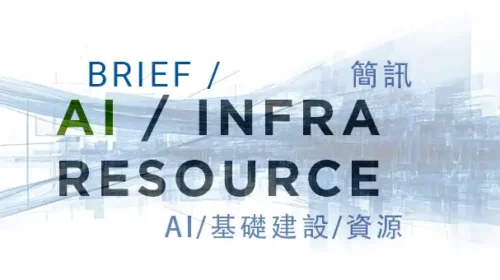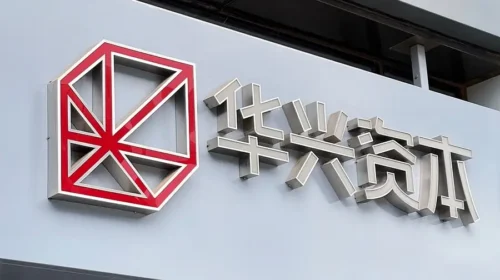ZKH Group IPO falls flat as investors worry over slowing growth

The provider of maintenance, repair and operations (MRO) products reported its revenue contracted in the third quarter, ending several years of growth
Key Takeaways:
- ZKH Group raised $62 million in one of the biggest IPOs by a Chinese company in New York this year, though its shares priced weakly and ended flat on their first trading day
- The company is valued ahead of many of its global peers, which could pressure its shares as its growth shows signs of slowing sharply
By Doug Young
If timing is everything, one of the largest IPOs by a Chinese company in New York this year hasn’t performed too well. After years of strong growth, ZKH Group Ltd. (ZKH.US) recorded its first revenue contraction in the third quarter of this year, the last reporting period before its shares made their trading debut last Friday.
The company makes money by selling products for maintenance, repair, and operations (MRO) to manufacturers, including everything from personal protective equipment to fasteners, welding materials, chemicals and all kinds of tools. It sells such items both directly to its thousands of customers, and also operates an online marketplace where third-party suppliers can sell to their own customers.
As a key link in the manufacturing supply chain, the company’s fortunes are closely tied to China’s manufacturing sector that is showing signs of a sharp slowdown after years of breakneck growth. The nation’s official purchasing managers index (PMI), the broadest measure of the sector’s health, has been has been contracting nearly every month since April, after ticking up strongly at the start of the year with the end of strict Covid restrictions.
As the nation’s manufacturing machine began to sputter, so, too, did ZKH’s results. The company made its first public IPO filing in March, back when people were hoping for a sharp post-pandemic rebound as supply chains and manufacturing activity began returning to pre-pandemic levels.
But even after China’s economy started running out of steam, ZKH still forged ahead with the listing plan. It priced its American depositary shares (ADSs) at $15.50, representing the bottom of their range, and raised $62 million, according to its pricing announcement issued last Friday before their trading debut.
While such an amount may not look huge, it’s actually one of the largest so far this year by a Chinese company in New York. That’s because such listings came to a near standstill over the last two years due to several regulatory obstacles both in the U.S. and China. Most of those have been resolved by now, clearing the way for big listings to resume. But with all those hurdles now out of the way, China’s sluggish economy has become the biggest new obstacle to IPOs.
Facing such economic headwinds, ZKH’s shares actually did surprisingly well in their trading debut, at least initially. The shares rose as much as 16% on Friday morning, before giving back those gains and ultimately closing unchanged at $15.50. Here, we should point out the company sold just over 3% of its total shares, which is quite tiny, indicating limited investor interest.
Founded in 2014, the company boasts a list of prominent pre-IPO backers, including internet giant Tencent (0700.HK), which now owns 9.2% of its shares, as well as Singapore’s Tiger Global with 5.2%. Another noteworthy backer is the Canada Pension Plan Investment Board, with 6.2% of its shares.
The IPO also includes a relatively solid list of top-tier underwriters, led by leading Chinese investment bank CICC, as well as Germany’s Deutsche Bank, which were mostly avoiding such listings over the past two years due to the regulatory issues. All this shows that this was a relatively high-powered listing, even if it ultimately received a tepid reception.
Overvalued shares
ZKH was worth a sizable $2.5 billion at the end of its first trading day, giving it a price-to-sales (P/S) ratio of 2.1, which looks surprisingly strong for this kind of company that is basically a massive middleman. U.S. giant Wesco International (WSCO.US) trades at a far lower ratio of 0.4, and the London-based RS Group (ECN.SG) also trades far lower at 1.3.
That means ZKH’s shares look a tad expensive after their first day, especially when one considers its growth is rapidly slowing and it’s still losing money.
Next, we’ll look at the broader market where ZKH operates, as well as its financials that don’t look too encouraging. The company is a leader in China’s MRO market, which is huge due to the nation’s manufacturing prowess. Third-party market data in ZKH’s most recent prospectus says the Chinese market for MRO procurement services was worth 3 trillion yuan ($422 billion) last year, and is expected to reach nearly 4 trillion yuan by 2027, representing annual growth of nearly 6%.
The prospectus notes that China’s MRO market is also highly fragmented, with the top 50 companies accounting for less than 10% share – far less than the 30% to 45% share commanded by the top 10 players in the more mature U.S. market. Thus, ZKH is trying to position itself as a potential consolidator that could one day rival some of its larger global peers.
It appeared to be headed in that direction as recently as 2021, when its revenue grew 63% year-on-year. But then the growth slowed sharply to just 8.6% in 2022, and slowed even more to just 3.7% year-on-year in the first nine months of 2023, reaching 6.3 billion yuan. And as we’ve previously noted, the company’s revenue actually contracted for the first time in this year’s third quarter, falling 2.6% to 227 million yuan from 233 million a year earlier.
The company didn’t provide much explanation for the rapid slowdown in revenue growth, though it blamed a decline in its second-quarter gross margin this year on a “post-Covid-19 economic recovery (that) was slower than expected.”
We’ve already noted that ZKH has been losing money since 2020, and probably for most or all of its lifetime. But its broader bottom line trends are a bit more positive. The company’s gross margin has improved steadily from 13.6% in 2021 to 16.5% in the first nine months of this year. Its net loss has also narrowed considerably from 1.1 billion yuan to 325 million yuan over the same period.
At the end of the day, we can’t get too excited about this company despite its position as a potential consolidator in China’s huge MRO procurement services market. Its slowing revenue growth is too worrisome right now, and it’s quite possible the third quarter could mark the start of a longer-term move into contraction territory as China’s economy enters a new slower growth phase.
Have a great investment idea but don’t know how to spread the word? We can help! Contact us for more details.
The Bamboo Works offers a wide-ranging mix of coverage on U.S.- and Hong Kong-listed Chinese companies, including some sponsored content. For additional queries, including questions on individual articles, please contact us by clicking here.
To subscribe to Bamboo Works free weekly newsletter, click here






